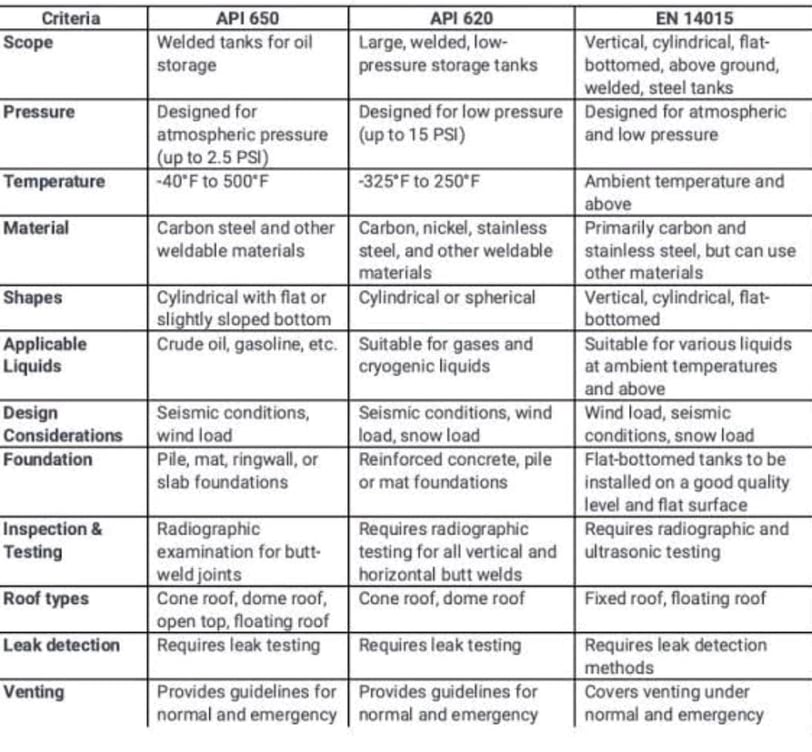A Comprehensive Comparison Between API 650, API 620, and EN 14015 Standards
API 620, API 650, and EN 14015 are standards for designing and constructing storage tanks, varying by pressure, temperature, and materials. API 620 suits low-pressure cryogenic tanks, API 650 handles broader applications with higher temperatures, and EN 14015 covers above-ground tanks for liquids at ambient or higher temperatures. All standards ensure structural integrity through rigorous environmental considerations and testing.
12/17/20241 min read


API 620 standard for designing and constructing large, welded, low-pressure storage tanks. These tanks are ideal for storing gases and high-volatile liquids at lower pressures, i.e., up to 15 PSI. This standard is often utilized for tanks storing liquefied natural gas (LNG) and other cryogenic substances.
-According to shapes: API 650 tanks are cylindrical in shape, featuring either a flat or slightly sloped bottom. API 650 considers open-top or fixed-roof tanks (such as cone or dome roof tanks) and even those with a floating roof. API 620 tanks are usually cylindrical with a flat or conical bottom and a spherical or cylindrical roof.
-According to material: API 650 and 620 standards permits a wider range of materials with carbon steel being the most common, including nickel and S.S
-According to the range of operating temp: API 650 tanks between -40°F : 500°F & API 620 tanks between -325°F : 250°F.
-According to environmental factors: API 650, API 620 not only covering wind and seismic conditions but also snow loads. Two standards provide detailed specifications for foundation designs, such as reinforced concrete, pile, or mat foundations.
-According to inspection and testing: API 620 are more stringent. It mandates radiographic testing for all vertical and horizontal butt welds to ensure the integrity of the tank's structure. Venting requirements are similar to API 650, and leak testing is a mandatory.
EN 14015 sets out the standards for vertical, cylindrical, flat-bottomed, above-ground, welded steel tanks. These tanks are used for storing liquids at ambient temperature and above. This standard doesn't specify a range for operating temperature. The primary materials for these tanks are carbon and stainless steel, but other materials can be utilized depending upon the requirements.
EN 14015 considers several environmental factors like wind load, seismic conditions, and snow load. Inspection and testing are rigorous and include radiographic and ultraviolet testing.


